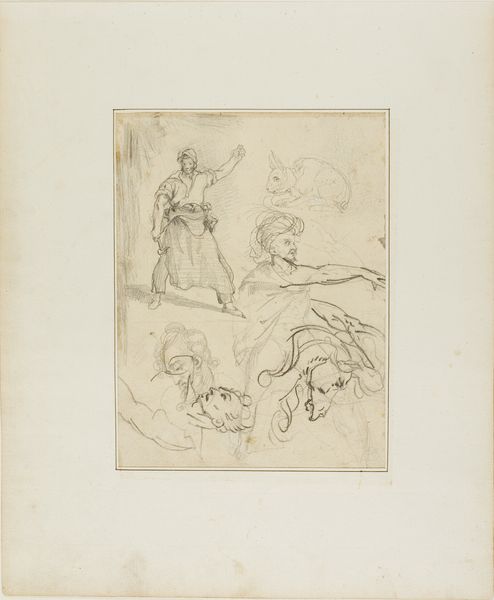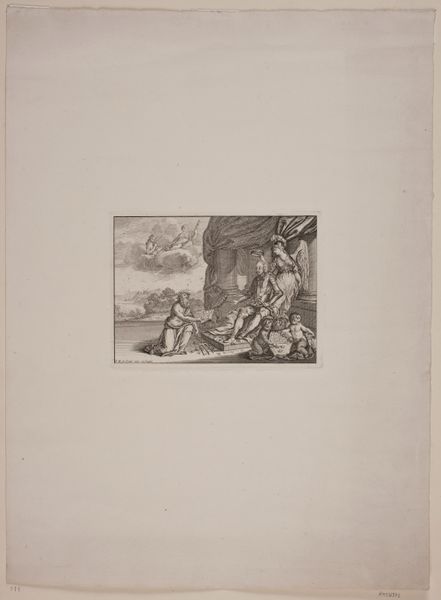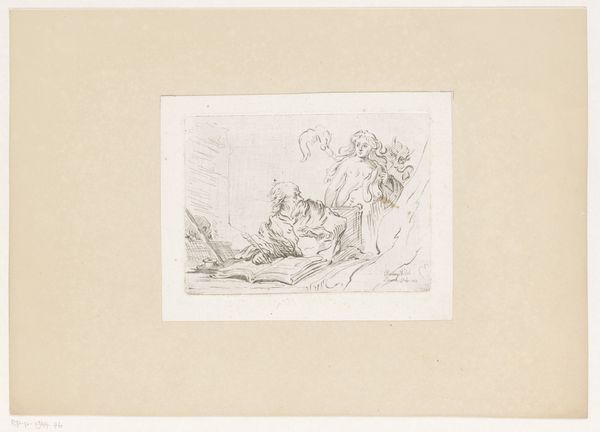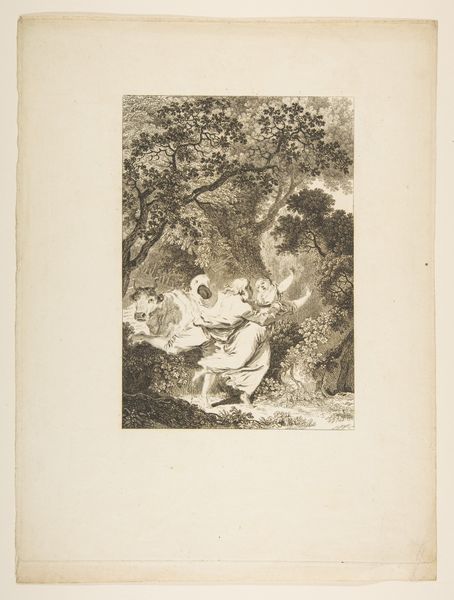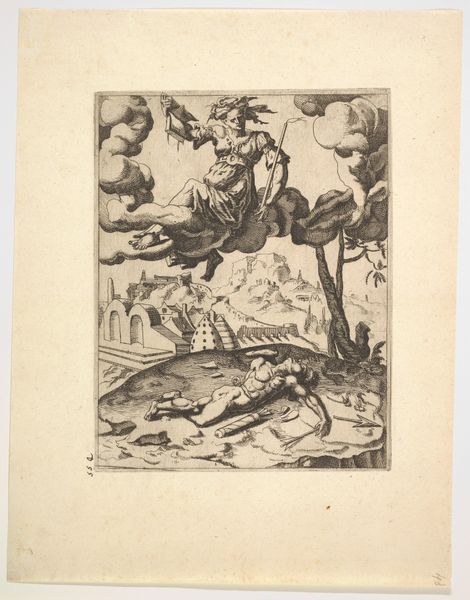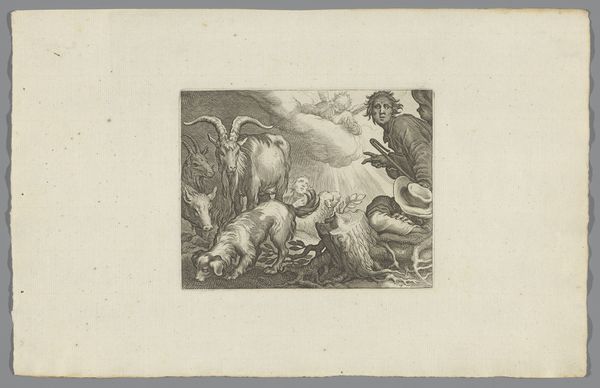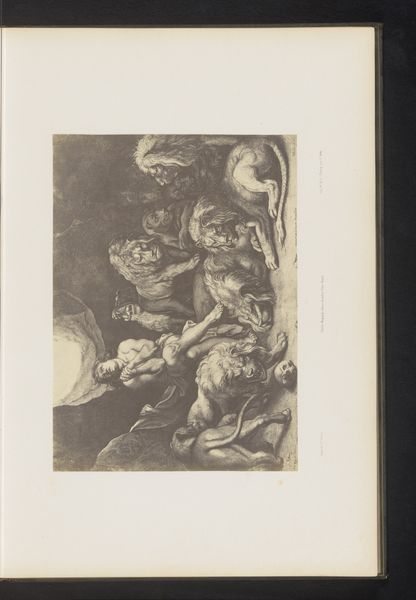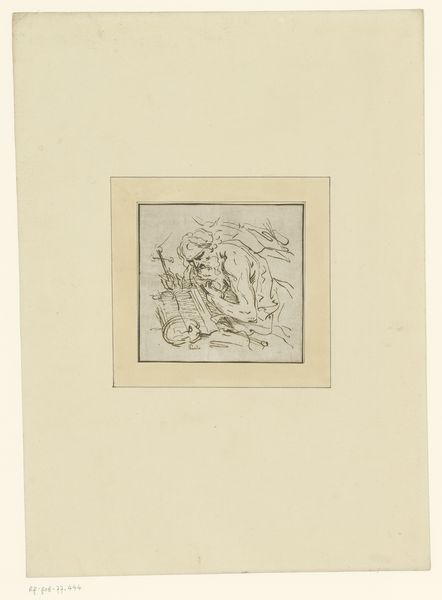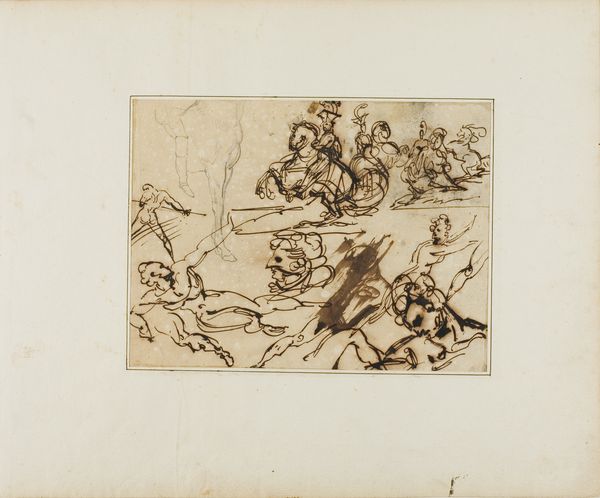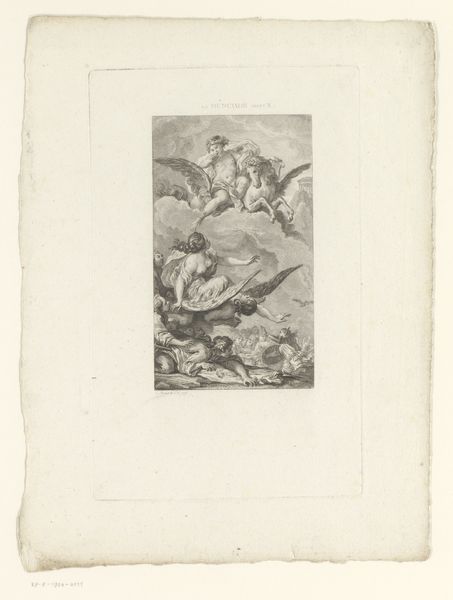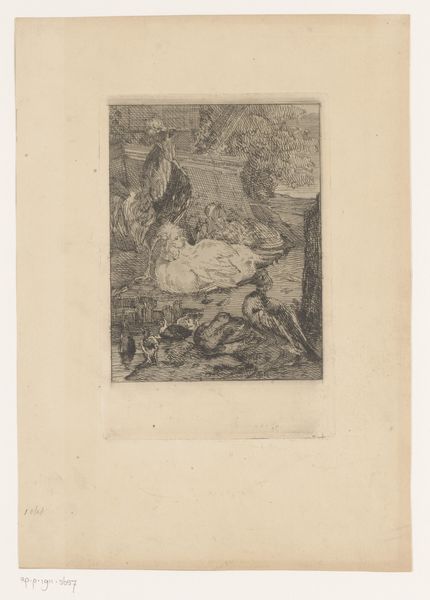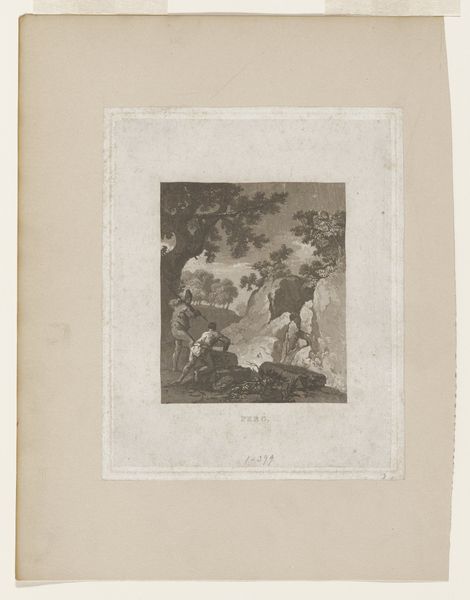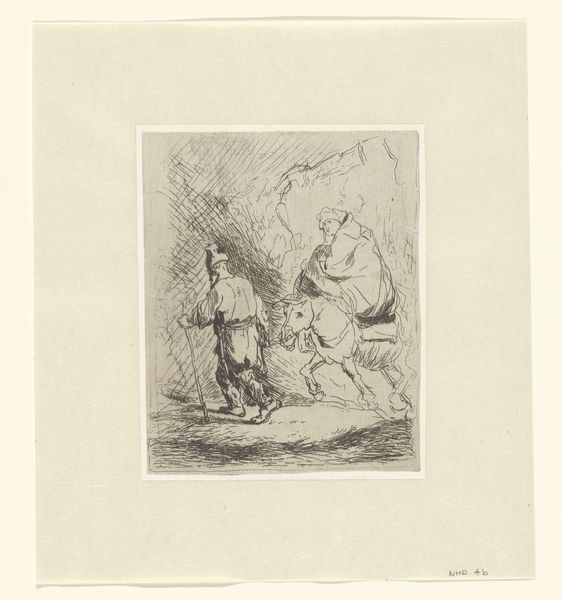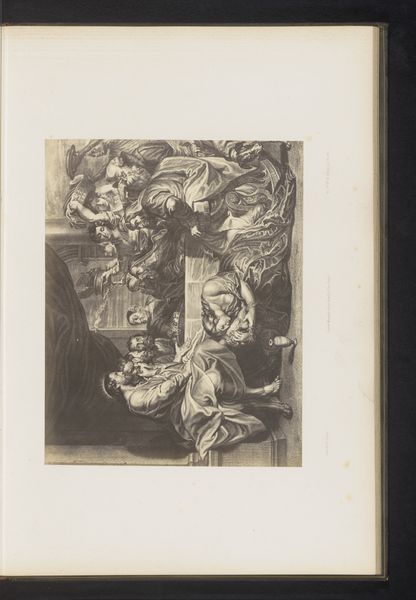
drawing, print, paper, watercolor, pencil, graphite
#
pencil drawn
#
drawing
# print
#
pencil sketch
#
landscape
#
paper
#
watercolor
#
romanticism
#
pencil
#
graphite
#
history-painting
#
watercolor
Dimensions: 172 × 230 mm
Copyright: Public Domain
Curator: Upon first viewing, what strikes you about the dynamism depicted in this preliminary sketch? Editor: It feels incredibly raw and urgent, a snapshot of chaos rendered with impressive economy. The frenetic lines capture the violence, the struggle… almost too well. What can you tell me about it? Curator: This is "Sketches for a Cavalry Battle," a work on paper using graphite, watercolor and pencil from Théodore Géricault dating from 1813 to 1814. The sketch is currently housed here at The Art Institute of Chicago. The immediacy of the medium certainly contributes to that raw quality you’ve noticed. Editor: Graphite, watercolor and pencil...a veritable mixed media approach for a preliminary piece. It makes you wonder about Gericault's access to these materials and the socioeconomic status this would infer. Also, given its historical context, I find myself considering the materiality of conflict itself. Paper and pigment capturing the energy of war – it's a fascinating contrast, really. What kind of pencils were available, what about paper? How was it made and by whom? Curator: An interesting way to view it indeed! Formally, notice how the loose, swirling lines and patches of watercolor create a sense of movement. The composition feels almost circular, drawing the eye back into the melee. Géricault’s skill in rendering anatomy, even in this quick sketch, is remarkable, although this, along with other romantic landscapes by the author are very rough. Editor: Indeed. I'm interested in the contrast between these darker strokes, almost a primal energy. It speaks to broader Romantic themes about emotional and creative processes of working with humble and accesible materials Curator: And the artist has used these materials to show movement and feeling, that's part of Géricault’s power—to translate emotional impact onto the page with apparent ease. This is why this study is an invaluable document when considering his practice. Editor: A powerful glimpse into the artist's process and into an aestheticisation of something that is generally seen as a terrible tragedy for people.
Comments
No comments
Be the first to comment and join the conversation on the ultimate creative platform.
